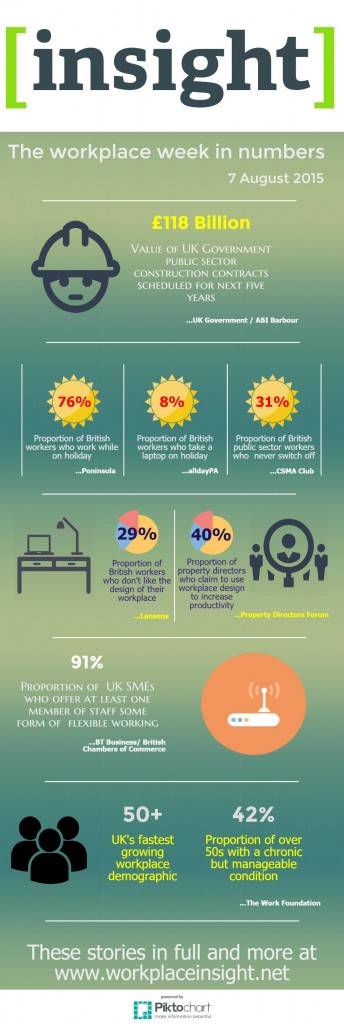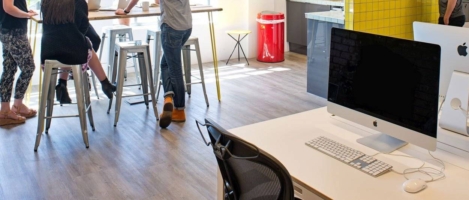August 9, 2015
Govt £118bn pipeline, Change leadership, Take a real holiday and more 0
 In this week’s issue; Lee Parsons argues the impact of office relocation can no longer be solely measured in tangible terms; Mark Eltringham questions people’s reluctance to simply go on holiday and explores the complex links that exist between our surroundings and how we think and act. The Government lists around £118 billion of publicly funded building projects over the next five years; and flexible working is the main driver in the growth of Cloud data services. Ergonomics experts focus on the much discussed topics of sedentary working; the Work Foundation presses employers to support the health of older workers; and from the latest edition of Work&Place Rebecca Booth explains one of the biggest obstacles to successful change leadership is “change fatigue.” Subscribe for free quarterly issues of Work&Place and weekly news here, follow us on Twitter and join our LinkedIn Group to discuss these and other stories.
In this week’s issue; Lee Parsons argues the impact of office relocation can no longer be solely measured in tangible terms; Mark Eltringham questions people’s reluctance to simply go on holiday and explores the complex links that exist between our surroundings and how we think and act. The Government lists around £118 billion of publicly funded building projects over the next five years; and flexible working is the main driver in the growth of Cloud data services. Ergonomics experts focus on the much discussed topics of sedentary working; the Work Foundation presses employers to support the health of older workers; and from the latest edition of Work&Place Rebecca Booth explains one of the biggest obstacles to successful change leadership is “change fatigue.” Subscribe for free quarterly issues of Work&Place and weekly news here, follow us on Twitter and join our LinkedIn Group to discuss these and other stories.































August 5, 2015
Using office relocation as a vehicle for positive organisational change 0
by Lee Parsons • Comment, Facilities management, Workplace, Workplace design
(more…)